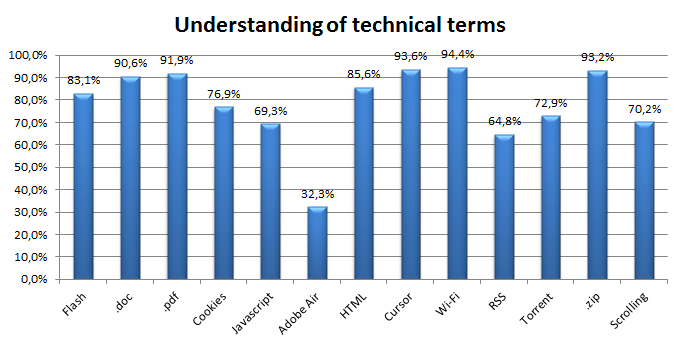In part one of this two-part series, we have built upon the foundation: the basics of value proposition— what value proposition is (and what it’s not), the difference between value proposition and unique selling proposition, importance, boosters and the key elements of value proposition.
We also managed to break down in steps creating a value proposition for your business. If you haven’t yet read the first part, you can do so here.
Now, in this part, we will be focusing on the best practices of creating and optimizing your value proposition for increased conversion. We will also look at some examples of great value propositions.
Talking of effective value proposition…
Contents
What Makes an Effective Value Proposition?
Well, quite a number of things. And to make this easy and memorable for you, here’s what I call the 8 C’s of a winning value proposition:
- Credibility: The value proposition must be realistic and believable. Don’t make promises you won’t be able to fulfill or one that prospects will find hard to believe. BTW, remember what true credibility is all about. It’s not what you say about yourself, but about how other people see you . It’s about getting other people to trust you.

- Convincing: The value proposition should be compelling enough to capture, convince and convert.
- Customer-centric: Don’t go on nattering about how awesome you and your product are. Your value proposition must be focused on the benefits users will get; it must be customer-centric.
- Clarity: The value proposition has to be easy to understand. It has to be clear in every sense— style, appearance, messaging, etc. A value proposition that confuses customers can kill conversion. Prospects should be able to read and comprehend it in 5 seconds; remember the average attention span of a web user is just about 8 seconds, which is less than the 9 seconds attention span of a goldfish.

- Clear-cut advantages: An effective value proposition not only has to contain at least one advantage, it must also communicate that advantage to customers with razor sharp clarity.
- Creative: Play around with the value proposition. Put your ingenious power to work. Let your creative wings fly you to the hearts of customers.

- Core-competencies only: The value proposition should focus on your strengths. Don’t start talking about how that you can’t do X but can do Y pretty well. Instead of mentioning X in the first place, focus on Y and on how you can make customers’ lives better by offering them Y.
- Competition-crushing: It should explain how the product or service is better than your competitors’. This is even easier if your offer contains enough PODs (Points of Difference).

Furthermore, to create a winning value prop, do these:
- Remember the KISS principle. You have a few seconds of their attention and time. Don’t try to bring in any kind of complexity here. Not only do you have to keep it simple and short, you also have to keep it smart and straightforward.

- Have different value proposition for different products or services. That way, you’d be able to clearly state the different benefits each offer brings. Prospects will also find the offers more valuable and find each value prop (nay, offer) easier to understand.
- Address the WIIFM concept. When it comes to value proposition, customer benefit is key. Consciously or unconsciously, people just like to ask the question WHAT’S IN IT FOR ME? as they go through offers. The WIIFM concept refers to all the benefits your potential customers could get from what you’re offering. So, remember to address it properly.

10 Characteristics of a Great Value Proposition
Strategyzer did a great work showing 10 important characteristics of an effective value proposition in a simple visual-style post (see it below). The visual shows that a great value proposition must:
- Be embedded in a great business model
- Focus on what matters most to the customer
- Focus on unresolved pains
- Target few jobs, pains and gains extremely well
- Go beyond functional jobs and address emotional & social jobs
- Align with how customers measure success
- Focus on jobs, pain and gains that people will pay money for
- Differentiate from competition
- Outperform competition substantially on at least one dimension
- Be difficult to copy

Common Mistakes with Value Proposition
Are you dropping the ball on your value prop already?
Hope you’re not! But if you’re doing the 5 things listed below, then we regret to inform you that you are:
1. You use industry jargons
Most folks think that by sounding like a “guru” of some sort, customers will buy from them, thinking…
…“this expert knows what he’s doing.”
So, they try to show their expertise and try to sound clever by using industry jargons and buzzwords. That’s a mistake I recommend you don’t make with your value prop.

Here’s what to do instead:
Apply the KISS principle as shared above. Don’t use words the average reader won’t understand. You don’t need technical terms to make sales.
2. Your value proposition is way too verbose
What if you were standing in front of a one-million-man crowd and you had just about 8 secs to capture their attention and get them to become interested in what you had to offer?
Something like, if you missed the first 5 secs, they’ll be gone. Forever.

And worse, you had 105 other folks waiting to make their presentations, too. Plus, the audience just can’t wait.
What will you say? How will you immediately communicate the matchless benefits and unique values of your offering to them?
You already know that trying to get too wordy here will be a mistake, right?
It’s the same with the value proposition. So, make it easy for customers to understand, at a glance, what you have to offer.
Keep the wordings down.
These days, there are too much content out there; and human beings no longer dovour them all like they used to. Instead, they’ve become skilled online scanners.

3. You’re assuming
Yep, you might have super brains but the trouble with guessing value propositions all by yourself is that customers may not be thinking the way you think about the issue, or may not view the problem and solution as you do.
I understand that some products and services started as a result of working out solutions to personal problems. But then, even at that, your customers may have different outlook on the solution.
So, bring your customers into the value proposition creation process through market research and A/B split testing. Don’t just assume things on your own.
4. You missed the “unique” component
Most times, value proposition is also referred to as Unique Value Proposition which means it has to be unique in some way.
You just can’t sound the same as the competition and expect to get much result, especially if the competitor you’re modeling has been in the market before you came.
So, spy up on the competition to see what they’re offering and then craft a way to be different and better.

5· Your focus is either too narrow or too broad
Making the message of your value proposition too narrow or too broad can also be a problem. It’s much like sending the wrong message.
You might want to ask: When is it too narrow and when is it too broad?
It depends on what you want.
If the value prop is too narrow, it’ll estrange or push away some people who’d otherwise have become your customers.
On the other hand, if it’s too broad, you’re spreading your net too wide and your offering almost won’t catch anyone’s fancy… except, maybe your mom’s and your cat’s.
The solution here is to have a clear understanding of what you want and then nail it.
Optimizing Your Value Propositions to Convert Better (Through A/B Testing)

As noted above, a number of marketers depend exclusively on their own thinking to create value propositions.
Of course, they may get a few other persons in their teams to contribute an idea or two; but the trouble is. . .
. . .value propositions created based on what you think (and without the input of your customers) may end up ruin your conversion rate.
There’s a better way.

Value proposition shouldn’t be created erratically; you just don’t decide it all by yourself and then fix it up there on your web page. It should be based on what YOUR IDEAL CUSTOMERS want.
Note the emphasis on “YOUR IDEAL CUSTOMERS.”
You have to bring them in by testing the value proposition to see what works well with them.
So, after following the steps I shared with you in the first article on how to create value proposition for your business. . .
. . .and after brainstorming. . .
. . .test different variations of the value proposition elements (primary headline, secondary headline, bullet points, image) to see which ones convert better.
By testing different value proposition messages, styles, colors, placement, etc., you’d be able to find just the perfect value proposition for your business website and outdo the competition, being that many businesses do not have effective value proposition. This survey found that about 54% of the respondents did nothing to improve their value proposition.

These are some of the most common mistakes marketers make with their value propositions. While you can learn from these mistakes, you’d perhaps learn better if you saw real examples of value propositions that convert.
Great Value Proposition Examples
Uber

What makes it great?
Uber’s value proposition is just right on point. The main headline speaks to their customers. The secondary headline goes on to give a solution to a major transportation issue people usually struggle with— time. Moreover, the value prop is easy to understand.
Shopify

What makes it great?
Shopify nails this with:
- A great headline
- A demonstrative image
- Social proof for winning customer trust
- And a “14-day free trial” value proposition booster
Instacart

What makes it great?
This value proposition goes straight to state the core benefit of the offering right in the headline. Who doesn’t want groceries delivered to them in an hour?
Plus, the sub-headline goes on to list more cogent benefits.
Unbounce

What makes it great?
- A descriptive and compelling primary headline.
- Interesting sub-headline, plus, it mentions the target customer.
- Bullet points with good visuals to boot.
- And, a clear call-to-action button to perfect it.
Chris Ducker

What makes it great?
So, here’s a personal website value proposition example. While the main headline doesn’t look all that convincing, the secondary headline is good as it gives details about the main headline and the offering.
One other remarkable thing about this value proposition is that it lists the benefits of the offering in bullet style which is awesome for capturing leads.
Oh, and the image.
Wrapping up…
An effective value proposition can help increase your website conversion and clearly pass your brand message across to customers in few, selected words.
In this article, we’ve shared with you on how to do just that, but it’s not enough just to read.
Take the information we’ve shared in part 1 and part 2 of this series, apply it to create your value prop, enhance your business and boost your conversion rates.
Meanwhile, feel free to drop your comments below. If you think this article was helpful, take a moment to share it with your friends and colleagues using the social sharing buttons. Thanks!


